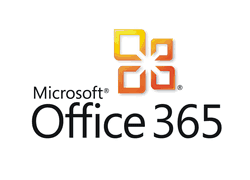It wasn’t that long ago when entrepreneurs, and even large enterprises, would purchase software, install it on computers and then repurchase new software as updates were inevitably issued. Implications from both a cost and administrative standpoint are obvious. Those updates could quickly eat into what are often limited budgets and the time required to store, inventory and update a wide range of software programs—often by user—could be significant.
Enter the cloud! The ability to use cloud-based applications addresses these issues and more. Data stored in the cloud is data accessible from anywhere. Especially for small business owners and operators who are frequently away from their desks (if they even have a desk!) easy access to files represents huge benefit.
Access, Security and Peace of Mind
Security is also a consideration. Face it. No matter how good you think your backup processes are, having these documents on site leaves you open to disaster. Even backing up on site documents and data through cloud-based services can represent some risk. Those backups can take a lot of bandwidth and consume a lot of time and, sometimes, those processes may fail or stop working as well. There are a variety of cloud business tools available for small businesses.
QuickBooks
I’ve been migrating my own business applications to the cloud—most recently our QuickBooks Enterprise database, which we previously hosted on a local hard drive. In addition to the confidence that comes from knowing our data will be safe and accessible, we’re able to easily access our data from any Internet connection. Our CPA and bookkeeper have the same access. Backups will be automatic on a redundant server farm and QuickBooks will maintain backups for 90 days.
Dropbox
We are also moving all joint files to Dropbox, and have tested that we can open key applications from there on our local machines. Again, we don’t have to rely on a local network or local computers that can crash or get taken out by theft, water, power surge, hardware failure or other. I am moving toward a model where our local machines have no critical data and merely host the software apps to open our critical data. This also plays into greater data security with hosted providers having more security in place than most small businesses.
Microsoft Office365
We’ve migrated to a Microsoft Office 365 subscription instead of buying and installing a new version of Office. These types of subscription-based services are becoming more and more the norm for my type of small businesses—and the literally hundreds of thousands of other small businesses that are increasingly demanding safety, security, ease of access and cost-effectiveness from their business processes.
AccessDirect
We’d be remiss if we didn’t also mention our own cloud-based service. Phone systems are just as subject to risk as other business processes. In addition, for many small businesses, the phone means business—or the loss thereof.
If an on premise phone system fails you are out of business! A cloud-based phone system can continue to answer and route calls to cell phones or receive voice messages which are sent to cell phones as an attached audio file, even if the power is out in your area.
Over the years we’ve had numerous businesses calling for an emergency stop-gap solution when their on premise phone systems died. In the best of circumstances, they may be down for a week. With a cloud-based system they never miss a beat.
These cloud-based business management applications are cost effective, don’t require cash up front and users get the advantage of the latest upgrades and features without all of the related installation and compatibility hassles. The sense of security that comes with these moves is significant. The ability to run my business “through the cloud” means we don’t have to rely on a local network or local computers that can crash or get taken out by theft, water damage, power surges, hardware failures or other threats.
What about you? What applications have you discovered to help your business contain costs while improving efficiency, security and employee satisfaction?











